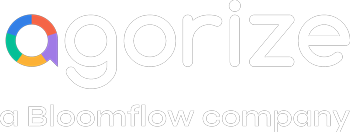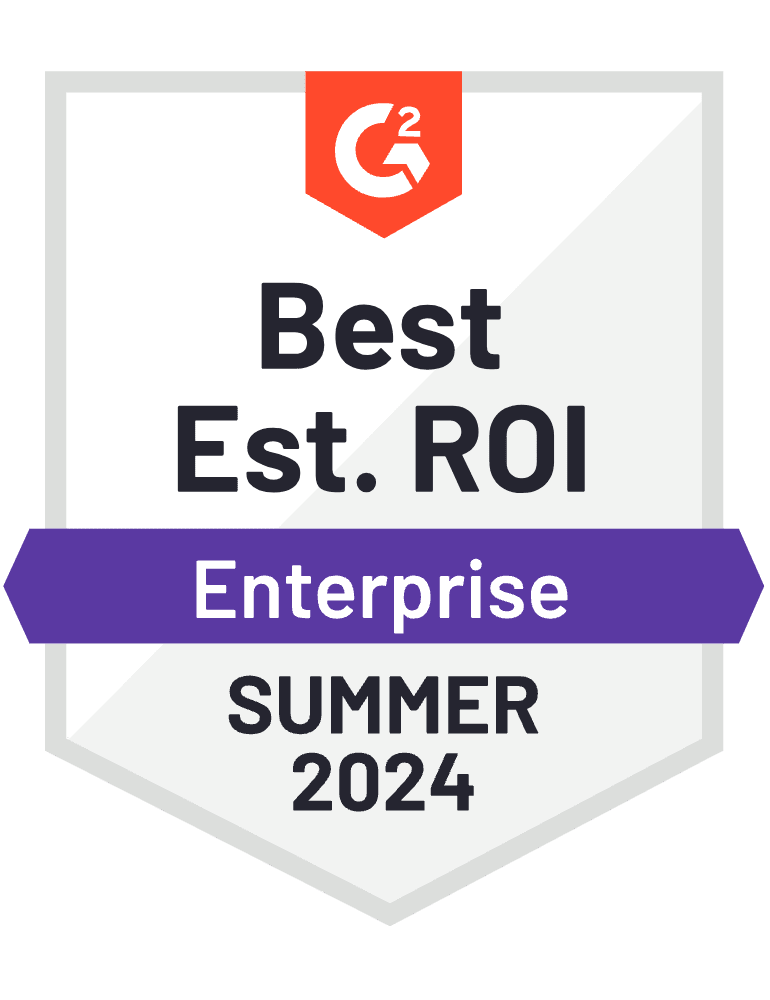Recruitment environment in 2023
The Great Resignation, ‘quiet quitting’, and job hopping just because you can. During the last couple of years, the job market and demand for talent transformed in a way we haven’t seen before. The recruitment game was heavily impacted by it.
Yet as we enter 2023, we see uncertainty rise as news headlines cover mass layoffs at tech giants and signals of an upcoming recession. Globally, companies could be looking to tighten budgets and reduce headcount. So what does all that mean for recruitment in the year to come?
For seven years, Agorize has been studying the trends that make the dos and don’ts of recruitment. In 2023, companies will need to engage future and existing talent as the need for critical skills remains. And as Millennials will represent 3 out of 4 employees by 2025, maintaining a flexible, collaborative and value-based employer brand throughout this time is essential.
Recruitment methods in 2023
To stand out and be more effective, employers must modernize their employer brand and recruitment strategy. A modern approach to recruitment serves two purposes. It strengthens the attractiveness of the company to both potential candidates and employees already in the organization.
What you communicate and how you communicate it will determine your ability to attract and retain the right talent. We evaluate the employer brand value and effectiveness of different methods you can use to achieve this.
1. Innovation programs
Employer brand: 👍👍👍
Innovation programs have the potential of engaging current employees as well as future talent. At the heart of collaborative innovation, these operations mobilize the creative power of innovators to meet the challenges of a company while allowing it to identify promising individuals and take note of current trends or aspirations.
For participants, these innovation programs make the employer more attractive as it promotes their approach to being a collaborative organization. Participants also experience what their potential employer is truly about. Often, current employees of the organizing companies get involved through mentoring to strengthen this experience.
Finally, as recruiters, you create a first touchpoint with talents and identify those who share the values and culture of the company by immersing them in the heart of your organization.
And when the innovation program does not lead to a job? The research work carried out by Arnaud Banoun and his research colleagues has shown that the rate of positive opinions towards the company is high regardless. Even the opinions of young graduates who have not been selected after participation.
Effectiveness: 👍👍👍
Innovation programs organized with the right tool can offer more than employer branding and innovative recruitment benefits. Experts from Harvard Business Review argued that streamlining hiring practices requires systematic evaluation through numerical ratings. With an innovation management platform that facilitates assessment and monitoring features, you gain not just a pool of high-potential talents, but also a holistic view of candidate performance.
More revealing than the CV, innovation programs make it possible to measure the real abilities of candidates but also their soft skills and motivation. The duration of the programs adapts to the problem statements, the desired targets, and the organizer itself, and can thus range from a few weeks to several months.
Take the multinational pharmaceutical and biotech company Bayer for example. They are screening candidates’ knowledge and soft skills such as collaborating in teams and presenting ideas through their Digital Campus Challenge. Since the first edition in 2018, their innovation program attracts talent to their brand and highlights the candidates they want to hire.
When to use it?
Either throughout the year, or 3 to 4 times a year at key periods (between the start of the academic year until May/June).
Target audiences
All profiles and particularly students, recent graduates, and the tech community.
2. Social recruiting
Employer brand: 👍👍👍
Social networks have become an essential tool for employer visibility, thus becoming part of the recruitment process. The advantage? Each target profile has its own network. If you are looking for an executive profile with at least 7 to 10 years of experience, then Linkedin will be your network of choice.
Looking to already connect with your future workforce consisting of Gen Z employees? Don’t disregard TikTok as quickly as you might be inclined to do. As the biggest social media platform to exist today, it would be wise to adopt TikTok in your employer branding strategy. The platform has even launched #TikTokResumes – a tool Gen Z job seekers can use to showcase their video resume to potential employers.
Thanks to short, effective content, social networks have demonstrated their ability to build and nurture a pool of candidates ready to join you.
Effectiveness: 👍
Currently, despite 45% of 25-44-year-olds using social networks for work, the effectiveness of social networks for recruiting remains mixed. Headhunters certainly use Linkedin for an individual and personalized approach. However, they are aimed at specific profiles.
And while Linkedin offers the possibility to connect its ATS to publish job offers and collect candidate responses, the quality of the applications is sometimes disappointing. As for other social networks, few allow candidates to apply directly.
Social networks are very good communication channels but must be supplemented by other actions to allow effective recruitment in volume.
When to use it?
Throughout the year create a stream of applicants contributing to your overall pipeline of candidates.

Target audiences
Everyone has their favorite network:
- Instagram, TikTok, and Snapchat for students and recent graduates.
- Twitch: for 15-30-year-olds with a strong interest in tech.
- Facebook: for 18-34-year-olds
- Linkedin: talent over 25 years old
3. Metaverse
Employer brand: 👍👍👍
From TikTok to Metaverse and Web3, the world of recruitment and employer branding is changing as fast as the real world is. Or at least, it should be if you want to keep up.
For those that are new to it, the Metaverse refers to a virtual environment in which people can interact through avatars. What was once a science-fiction concept, is now a reality that some innovative companies are already utilizing to attract talent.
What makes virtual recruitment so interesting? Using the Metaverse and the technologies that make it come to life (like augmented reality, virtual reality and artificial intelligence), brands can create a highly personalized experience for candidates.
And that is what Millennials and Gen Z are looking for. They look for value-based employers that encourage collaboration and flexibility. Traditionally all features that are hard to communicate genuinely if it doesn’t have a ‘human’ touch. Until the arrival of the Metaverse.
Effectiveness: 👍
Virtual recruitment using the Metaverse has been used by big brands out there, like LG and Samsung. Nonetheless, it’s not yet earned its place in the list of most effective recruitment methods in 2023.
Like many methods, it holds value as a supplement to your overall strategy. It can help to create a highly personalized first touchpoint with your target audience (especially the younger and more tech-savvy ones) and position the brand as one that is innovative. What’s (currently) lacking is the end-to-end system needed to not only identify but also assess and further build a relationship with candidates.
When to use it?
A couple of times a year to create buzz around your employer brand, only when other systems are in place to extract the talent you attracted and push them through the recruitment funnel.
Target audiences
Younger generations and tech-savvy professionals are likely to ‘get’ the appeal of the Metaverse and virtual recruitment. It’s no coincidence that tech companies are the first to use it in their overall recruitment efforts.

4. Career fairs
Employer brand: 👍
Being present at a recruitment fair historically remains an excellent way to be seen and create a connection in real life. However, it will not systematically change the opinion of students about your company.
This is why the results remain mixed for employer brands. In short, the ‘channel’ remains a good tool if you are already well-known by your target audiences, otherwise it will be better to combine it with other actions.
Effectiveness: 👍
Career fairs are indisputable opportunities to meet students and recent graduates. In any case, this is what we hope for each time. However, the experiences are more contrasted. In addition to the cost of these events, organizing your presence is often time-consuming and the time available to discuss with students is ultimately quite limited.
A good practice is to offer them to make an appointment beforehand. This allows you to efficiently structure your schedule, mobilize internal resources and calculate the profitability of the operation more precisely. What will remain are a few hundred collected CVs, which will then have to be analyzed.
When to use it?
Between May and June and during the last quarter of the year – or whenever the university you are collaborating with is organizing a fair you can attend.
Target audiences
Students and recent graduates.
5. Internal referral programs
Employer brand: 👍👍
In marketing, no advertisement works as well as a positive review by a genuine consumer. With employer branding, it can be much the same. No matter how shiny your brand looks on the outside, without your current employees’ approval you won’t reap all the benefits of your efforts.
Turning your employees into incentivized brand ambassadors can be a great way to communicate your corporate culture and company values to potential candidates in a genuine way.
It’s the highly engaged employees that are likely to talk about their job with others and in turn spread the word about what it’s like to work there. In this case, incentivizing the act of referring a new hire is a way to show the tangible value of new recruits.
Effectiveness: 👍👍
The power of many is not to be underestimated. Professionals from a certain department are likely to know peers in the same sector. Therefore, your employees can be a direct link to talent that is otherwise a lot harder to reach if you don’t have community access.
In a way, the first round of assessment is done by them as well. Nobody would refer an irrelevant candidate, for the sake of their own reputation and credibility within the company.
As referral fees are completely dependent on whether you hire the referral or not, the return on investment of this method is in your favor. What keeps this from being the most effective recruitment method out there? While you can encourage and incentivize, you can’t force people to spread the word and refer candidates to you. Therefore it’s risky to solely rely on this method to meet your hiring objectives.
When to use it?
When you are having a hard time sourcing a certain profile or when recruitment budgets are tight.
Target audiences
This method would work with most profiles and levels of seniority.
6. Job boards
Employer brand: 👍
Job boards have some advantages because they are made for the exact thing you set out to do. Recruit. Yet when it comes to employer branding it often lacks the depth and personalization possibilities that would require.
Especially with Millennials and Gen Z, job boards don’t meet their expectations when it comes to learning more about what matters most to them: company culture, opportunities to grow, and what their future colleagues might be like.
Ideally, a job board is where candidates find you after they’ve been exposed to your employer brand elsewhere. To make sure that this candidate journey is as seamless and aligned as possible, you should optimize your job board posts with resources and company information that enrich candidates’ knowledge.
Effectiveness: 👍👍
The effectiveness of job boards depends on multiple factors, including the types of candidate profiles you’re seeking (like their seniority and skill) and the time you have on your hands to find the right candidate. Especially in a labor market where talent can practically choose where they want to work, you might have a harder time.
As job boards are almost always resume-based, you’re likely to find hard-skill matches before soft-skill matches. Candidates will enter a traditional recruitment process consisting of assessments and interviews. While not the most innovative way of sourcing talent, it’s still effective for many employers that have a constant need for new hires.
When to use it?
Throughout the year when you are in need of talent, give yourself some time in the current job market.
Target audiences
While some job boards are universal, others target specific communities. Set out clear expectations and choose a platform based on your needs.
Successfully recruiting in 2023 requires an engine made of different methods
Strong employer brands attract and retain high quality talent. Yet without proactive recruitment methods to acquire new people, it won’t suffice to keep up with hiring objectives. It’s key to find methods that meet both employer brand value and effectiveness expectations.
Creating an effective recruitment engine starts with clearly outlining your target audience. Although Millennials will make up 75% of the workforce in 2025, Gen Z will be the new generation looking to enter the job market.
While not identical, both groups expect employers to have an agile organization, societal commitment and place a lot of importance on the recommendation of their peers. They will be attracted by a modern recruitment model allowing for full potential to be expressed, beyond a simple resume.
After outlining a target audience, the right recruitment methods have to be selected. 2023 calls for a modern, gamified and innovative approach with measurable Return on Investment.
Connect on platforms native to the jobseeker, share ‘real’ information through current employees and innovation programs and don’t be afraid to sometimes let go of traditional resume-based recruitment.
There’s still time to take on this challenge and get your recruitment engine going.
FAQ
The recruitment environment is marked by several key trends and challenges:
The Great Resignation: A phenomenon where employees are leaving their jobs in large numbers, impacting the job market and creating a need for effective talent acquisition strategies.
‘Quiet Quitting’ and Job Hopping: Employees are leaving jobs more discreetly, and there’s an increase in job hopping. This behavior is reshaping the dynamics of the job market.
Uncertainty and Economic Indicators: Headlines cover mass layoffs at tech giants, and signals of an upcoming recession raise uncertainty globally. Companies may tighten budgets and reduce headcount.
Critical Skills Demand: Despite challenges, the need for critical skills remains, and companies must find ways to engage both future and existing talent.
Millennials Dominance: With Millennials expected to represent 3 out of 4 employees by 2025, maintaining a flexible, collaborative, and value-based employer brand is crucial.
Innovation programs play a crucial role in effective recruitment by:
Engaging Employees and Future Talent: Innovation programs have the potential to engage both current employees and future talent. Through collaborative innovation, these programs mobilize creative power to address company challenges and identify promising individuals.
Strengthening Employer Brand: Participation in innovation programs makes the employer more attractive by showcasing a collaborative organizational approach. Current employees often get involved through mentoring, enhancing the experience for participants.
First Touchpoint with Talents: Even if the innovation program doesn’t lead to a job, participants hold positive opinions about the company. This creates a valuable first touchpoint, and young graduates who haven’t been selected still have positive opinions.
Holistic Candidate Assessment: Innovation programs, when organized with the right tools, offer more than just employer branding benefits. They provide a systematic evaluation of candidates through numerical ratings, offering a holistic view of candidate performance, including soft skills and motivation.
Building a Talent Pool: Innovation programs, like Bayer’s Digital Campus Challenge, attract talent and highlight candidates for hiring. The programs help identify high-potential talents and build a talent pool for future recruitment needs.
Employers are encouraged to integrate innovation programs into their recruitment strategies, leveraging their benefits for both employer branding and the identification of promising talent.










